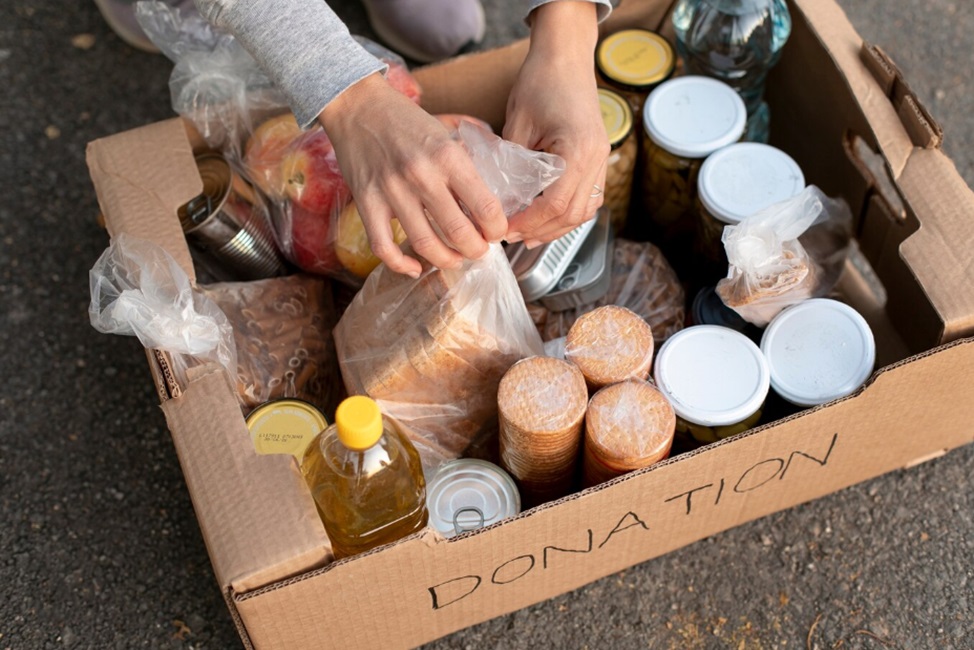Socially sustainable team building: a complete guide for companies
Teams that engage in meaningful activities together can grow and improve their performance, but there's more to it than that. They can also do good—real good.
Socially sustainable team building blends purpose with collaboration. When planned carefully and thoughtfully executed, some team building activities can prove to be incredible catalysts for human connection, while also helping employees build useful skills, enhancing employer reputation, and delivering tangible benefit for communities.
If you are interested in delving into this aspect of team building, but unsure where to start, we can guide you through what socially sustainable team building means, why it matters, how to choose and run such activities, examples, and how to measure success.

What is socially sustainable team building
Socially sustainable team building (sometimes called “charity building” or CSR-team building) refers to group activities designed to strengthen teamwork, leadership, communication etc., while also delivering a positive social impact. It differs from more conventional retreats or entertainment-based events because its goal isn’t solely fun or relaxation—but real value to people, causes, and sometimes the planet.
Core components
Successful socially responsible team building rests on four interconnected principles that work together to create meaningful impact. The foundation begins with purpose alignment, ensuring the chosen cause genuinely reflects the organization's core values, whether that's supporting education, environmental protection, or social inclusion. This authenticity prevents the initiative from feeling forced or superficial.
The collaborative element focuses on meaningful tasks that naturally develop interpersonal, leadership, and intercultural skills through shared challenges. Whether team members are volunteering together, tackling creative problem-solving exercises, or working on community projects, the activities should strengthen both individual capabilities and group dynamics.
Sustainability considerations weave through every aspect, from minimizing material waste and carbon footprint to ensuring activities create lasting benefit rather than one-time gestures. Partnering with established local organizations and community groups helps guarantee that efforts contribute to ongoing needs rather than creating additional burdens.
Finally, tracking measurable outcomes on both fronts—the social impact through beneficiaries served, volunteer hours, or funds raised, alongside internal returns like improved employee morale, retention rates, and productivity—provides the data needed to refine and improve future initiatives while demonstrating genuine value to all stakeholders involved.

Why socially sustainable team building matters
Many companies now see such initiatives as more than “nice to have”. The rewards—in human, social, and business-terms—are strong. Volunteering and charity-linked team building give people meaning at work, increasing commitment. Studies show that employees who participate in volunteer programs are more likely to stay with the company; their job satisfaction and sense of purpose rise.
Companies with a visible social conscience draw talent (especially younger generations). Brand reputation improves. Customers, partners, stakeholders take notice. Through organised activities: project planning, working in diverse teams, communication, even intercultural understanding. These are useful back in the workplace.

Examples of socially sustainable team building activities
Here are concrete ideas—some more involved, others small-scale—that combine purpose with team building. Pick what matches your goals, resources, and scale. Teams build bicycles together; then donate them to children or people in need. Very tangible result; encourages planning, collaboration. Need good logistics for parts, delivery, safety.

Corporate volunteering/social day is also a very good idea. Examples include digital literacy workshops for seniors, park or beach clean-ups, and helping with social integration projects. These activities are flexible, scalable, and usually less expensive, though they require coordination with NGOs or local groups. Other effective activities include tree planting, recycled product challenges, and awareness-raising games about the environment. All of this helps build environmental consciousness and can tie into broader CSR strategies.
How to plan and implement effective socially sustainable team building
Putting together something meaningful takes more than picking an idea. Here’s a roadmap and pitfalls to avoid.
Define your objectives: what do you want? Better collaboration? Improved employer reputation?
Based on that, you should pick your partner(s) and the cause you want to associate your brand with. If the initiative doesn’t match the company’s values, people will see through it. That’s why it makes sense to partner with NGOs or local groups that share the same outlook, after taking the time to check their track record.
Activities shouldn’t come across as extra tasks on a checklist. They work best when they’re meaningful but also enjoyable—something people actually look forward to, that leaves both a sense of contribution and a good memory.
And then there are the practicalities: logistics, accessibility, and sustainability shouldn't be dealt with as an afterthought. Using what’s local, cutting down on travel, and steering clear of single-use props all send the right message.

However, there are several common pitfalls to avoid when implementing these initiatives:
Tokenism: Doing something only for optics without depth leads to cynicism. Make sure the initiative is genuine and the team sees the difference it makes.
Poor partnerships: If partner organisations are unreliable, or if social cause is mismatched, impact will suffer. Always vet and maintain ongoing relationships.
Measurement difficulties: Some outcomes are intangible or long-term (e.g. culture change). Use mixed methods: surveys, stories, and quantitative indicators.
Embedding lasting socially sustainable team building into your company culture
You can’t just check the box once. The most meaningful socially sustainable team building is part of how a company operates—not a rare event. When these activities become embedded—through strategic partnerships, recurring programmes, clear measurement—they change the internal climate, strengthen external reputation, and help employees feel they belong to something bigger.
If you start with purpose, plan attentively, deliver with sincerity—and measure with transparency—you’ll see effects that go beyond a single event: stronger culture, happier teams, better business and a better community. Ultimately, the question is not if a company should invest in socially sustainable team building, but how deeply and thoughtfully.
